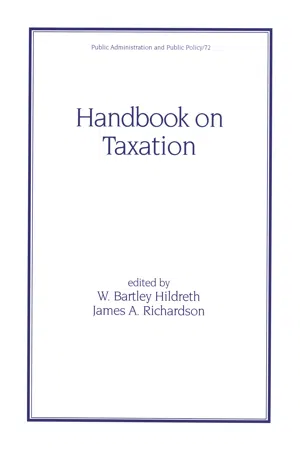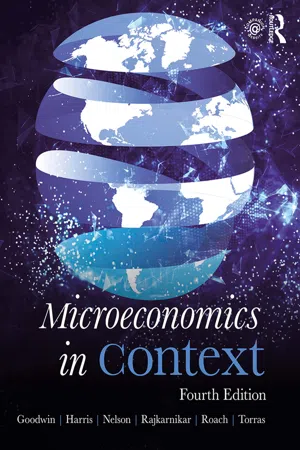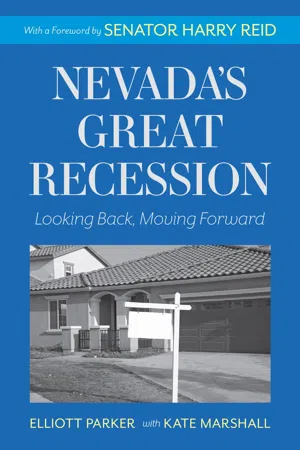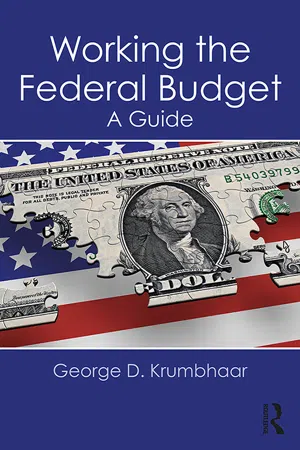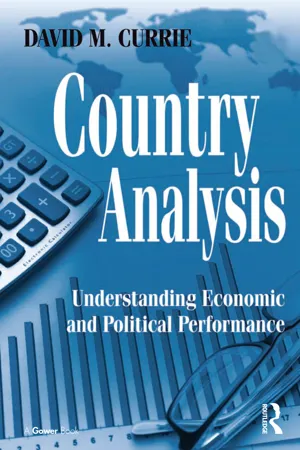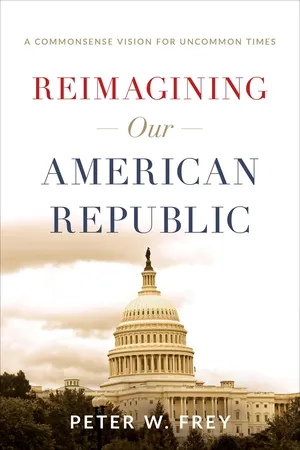Economics
Federal Taxes
Federal taxes are the financial obligations imposed by the government on individuals and businesses to fund public expenditures. These taxes are collected by the federal government and are used to finance various public services and programs, such as national defense, infrastructure, and social welfare. The federal tax system is designed to distribute the burden of funding these services across the population based on income and wealth.
Written by Perlego with AI-assistance
Related key terms
7 Key excerpts on "Federal Taxes"
- eBook - ePub
- W.Bartley Hildreth(Author)
- 2019(Publication Date)
- Routledge(Publisher)
Taxes are imposed by congressional and legislative fiat. Legislation defines the legal incidence of the tax. The excise tax on tobacco is remitted to the government by tobacco wholesalers, but the true incidence of the tax is borne by any number of people, starting with the consumer, to the retailer distributing the product, to the wholesaler, and to the manufacturer. The legal incidence of a tax is clear, but the economic incidence is much more difficult to identify.Legal incidence is important for administrative purposes, but economic incidence is much more significant for estimating and predicting the impact that the tax might have on the economy. The personal income tax will typically have the same legal and economic incidence; that is, the individual taxpayer will remit the tax to the government and will bear the full burden of the tax. The corporate income tax will be remitted to the government by the corporation, but exactly on whom the burden will fall is subject to debate. The stockholders may absorb some of the tax burden, the corporation’s customers may incur some of the tax burden through higher prices, the corporation’s labor and other such inputs may incur some of the tax burden through lower wages or lower rental rates for property or for leased equipment, or there may be some scattering of the tax burden based on market conditions at the time.Every tax that is not directly imposed on an individual will most probably have an economic incidence that will diverge from the legal incidence of the tax. Taxes on businesses; taxes on energy resources; taxes on tobacco, alcoholic beverages, airlines, telecommunication services, and other such products; import fees; and other taxes that are not directly levied on an individual taxpayer will be shifted if at all possible from the entity legally liable for the tax to some other person involved either with the production or consumption of the product. Exactly on whom the tax burden will ultimately fall depends on market conditions.IV. FEDERAL, STATE, AND LOCAL TAXATION
Taxation is taxation from the perspective of someone having to pay the tax. It does not matter if it is levied by the federal government, the state government, or the local government. A person has to pay the tax. Federal, state, and local governments have selected different types of taxes to finance their respective public services, however. The federal government almost exclusively uses the personal income tax and the payroll tax. These taxes provide about 80 percent of all revenues received by the federal government. Corporate taxes make up about 11 percent of all federal tax collections; excise taxes make up about four percent; and other taxes such as inheritance taxes and import fees, make up about five percent of federal tax collections. Federal tax collections are not highly diversified. - eBook - ePub
- Neva Goodwin, Jonathan M. Harris, Julie A. Nelson, Pratistha Joshi Rajkarnikar, Brian Roach, Mariano Torras(Authors)
- 2018(Publication Date)
- Routledge(Publisher)
Fortunately, one need not comprehend the imposing complexity of tax laws to understand the crucial role of taxes in modern societies. Taxation is an important topic for students of economics. Tax policies have important economic consequences, both for a national economy and for particular groups within the economy. Tax policies are often designed with the intention of stimulating economic growth—although economists differ significantly about which tax policies are most effective at achieving this. Taxes can create incentives promoting desirable behavior and disincentives for unwanted behavior. Taxation provides a means to redistribute economic resources toward those with low income or special needs. Taxes provide the revenue needed for important public services such as social security, health care, national defense, and education.Taxation is as much a political issue as an economic issue. Political leaders have used tax policy to promote their agendas by initiating various tax reforms: decreasing or increasing tax rates, changing the definition of taxable income, creating new taxes on specific products, and so forth. Of course, no one particularly wants to pay taxes. Specific groups, such as corporations, farmers, or retired individuals, exert significant political effort to reduce their share of the tax burden. Tax codes are packed with rules that benefit certain groups of taxpayers while inevitably shifting more of the burden to others.In this chapter, we take a look at taxes and tax policy. First, we consider taxes from a theoretical perspective based on the economic models from earlier chapters. Second, we summarize the different types of taxes, with an emphasis on the United States. Third, we present an international comparison of tax policies. Finally, we address current tax debates, including the distribution of the tax burden among different groups.1 . Economic Theory and Taxes1.1 Taxes in the Supply-and-Demand ModelThe supply-and-demand model we presented in Chapter 3 can be used to gain insights into the effects of taxation on consumers and producers. To incorporate taxes into our model, we consider a per-unit tax on a product or service, referred to as an excise tax - eBook - ePub
Nevada's Great Recession
Looking Back, Moving Forward
- Elliott Parker, Kate Marshall(Authors)
- 2017(Publication Date)
- University of Nevada Press(Publisher)
CHAPTER 6
Federal Fiscal Policy
In 1790, the nation which had fought a revolution against taxation without representation discovered that some of its citizens weren’t much happier about taxation with representation.— LYNDON B. JOHNSON 1IntroductionMany discussions about taxes begin with the assertion that they are rising out of control. In the past thirty-five years, the revenue collected by the U.S. government—federal, state, and local—has grown more than fivefold. Income taxes are the largest source of federal government revenues, followed by payroll taxes for social insurance programs. Corporate income taxes and other Federal Taxes make up a small share of total federal revenue, and federal revenue makes up the majority of all taxes paid to all levels of government. Figure 6.1 shows how much the federal government collects if we adjust for price inflation; since 1980 the total has grown by 166 percent.The problem with presenting these data in this way is that we fail to account for the gradual annual increase in the U.S. population, and for rising real incomes that affect how much federal, state, and local governments must pay to their employees to compete with the private sector. We can divide by GDP to get a more meaningful number, but this would make government revenue look relatively higher during recessions and lower during booms. To get a more stable ratio, we should divide by the economy’s estimated potential GDP , which is reported by the Federal Reserve Bank of St. Louis.2As a share of potential GDP , government receipts have been much more stable over the past three to four decades (figure 6.2 - eBook - ePub
Working the Federal Budget
A Guide
- George D. Krumbhaar(Author)
- 2017(Publication Date)
- Routledge(Publisher)
9 Taxes and Tax PolicyIn some Ways just Another Form of Spending
There is widespread agreement that responsible government requires a tax system that both fully funds its activities and distributes the burden of the funding equitably. It is more difficult to agree, however, on what is the proper level of governmental activities, and what constitutes an equitable burden. This chapter explores four sets of issues and determinants that go into basic decisions about tax policy:1 Revenue sources: Where do budget revenues come from? Whom does the federal government tax, and how much does it get through these different forms of taxation? Who pays taxes (the rich, the poor)? This section examines the makeup of federal taxation and the additional billions that the federal government takes in through quasi-commercial transactions.2 Tax incentives: Sops to the rich, a drain on the budget, or effective tools for tax policy? This section looks at the role of tax incentives and other adjustments to normal tax law. Whom do they favor? How effective are they?3 Tax levels: Many jurisdictions aim at low tax rates in order to attract business investment and increase employment. Does the same principle apply at the federal level? Are there ways, as some political leaders claim, that lowering taxes can actually boost overall revenues by stoking more business activity? This section looks at arguments about tax levels, and how these affect the current debate over budget cuts and balancing the budget.4 Taxes and legislation: Congress has not revised the tax code in over 30 years, since the Tax Reform Act of 1986. In the current budget debate there is bipartisan support for major revisions in the tax code, even if there is little agreement on the specifics. This section looks at how tax legislation comes to the floor, and why major revisions are hard to come by.Revenue Sources
The federal government has two major kinds of income. They consist of:• Government receipts. These include personal income and corporation taxes, customs duties, estate taxes—in fact, anything the government gets through the exercise of its sovereign power. - eBook - ePub
- Robert E. Wright, Thomas W. Zeiler(Authors)
- 2014(Publication Date)
- CQ Press(Publisher)
Lost in this discussion, however, have been concerns about simplicity and revenue sufficiency, as the tax system has grown ever more complex since 1986 and the amount of tax revenue collected has fallen well short of government expenditures in recent years. These two factors will no doubt set the stage for the debates that are yet to come.SOURCES OF FEDERAL TAX REVENUEThe federal government in the United States relies on six major types of taxes: the individual income tax, payroll taxes, the corporate income tax, the estate tax, excise taxes, and customs duties and fees.The individual income tax is levied on all sources of income, including wages and salaries; farm, business, and rental income; investment income (including interest, dividends, and capital gains); and other sources. In figuring income tax liability, taxpayers add up all of their sources of income, then subtract a number of adjustments to income (including some education, moving, retirement, and health-related expenses), to yield their adjusted gross income. Taxpayers then subtract either a standard deduction or the total amount of itemized deductions (including medical expenses, state and local income taxes, mortgage interest, charitable donations, and a number of other deductions) and subtract a dollar amount for each exemption that they claim. The result is the taxable income. Finally, taxpayers use a graduated tax schedule in which the marginal tax rate, the tax rate on an additional dollar of income, increases in steps as taxable income increases, to calculate their regular income tax liability. The range of incomes to which a particular marginal tax rate applies is called a tax bracket.Higher income taxpayers must also calculate tax liability in an alternative way by adding back some of the deductions and exemptions and by applying a different rate schedule. If the result of this calculation is higher than their regular income tax liability, they must pay the difference in the form of the Alternative Minimum Tax.Finally, a number of credits are allowed against an individual’s tax liability, including the foreign tax credit, credit for child and dependent care expenses, Child Tax Credit, and the Earned Income Tax Credit (EITC). Some of these credits are payable even if the credit exceeds the taxpayer’s income tax liability.2 - eBook - ePub
Country Analysis
Understanding Economic and Political Performance
- David M. Currie(Author)
- 2016(Publication Date)
- Routledge(Publisher)
CHAPTER 5 Evaluating Fiscal Policy Spending and taxing are two of the most important decisions governments make. Together, they constitute the government’s budget, which reflects the government’s priorities about its role in society, the services it performs, and the direction of the economy. The budget has important implications for a country’s economic performance because the government can use the budget to stimulate or restrain an economy. An outside analyst can develop a feel for the wisdom of a country’s decision makers by examining their success in managing the budget. Learning Objectives After reading this chapter, you should be able to: 1. explain the sources of government revenue and purposes of government spending; 2. explain the difference between a budgetary surplus and a budgetary deficit; 3. explain the difference between a budget deficit and the national debt; 4. compare and contrast the concepts of tax base and tax rate; 5. explain the incentive effects of taxes and subsidies; 6. explain the economic justification behind government taxation and spending policies; 7. explain measures of government fiscal risk; 8. use budgetary and debt figures to analyze investment risk. Budget of the United States Government Like businesses and individuals, governments operate with a budget. A budget is an estimate of the receipts and spending over a period of time by an entity such as a government or a business. The budget details how the government will raise funds, primarily through taxes, and how it will spend the funds that it obtains. Unlike businesses and individuals, government budgets are laws, at least in developed countries such as the US. When any level of government – federal, state, or local – taxes its citizens and spends on their behalf, the action requires a series of laws. At the federal level in the US, the laws must be passed by both houses of Congress and signed by the President - eBook - ePub
Reimagining Our American Republic
A Commonsense Vision for Uncommon Times
- Peter W. Frey(Author)
- 2019(Publication Date)
- Greenleaf Book Group Press(Publisher)
7 This prescription, “broad base, low rates,” recommends taxing a wide range of economic activity while keeping the rate for each tax at a low level. Most economists believe that tax policy could be arranged in such a way as to avoid distortions in business decisions. Individuals and corporations should conduct business based on market realities rather than on an attempt to game the government’s taxation system. This consideration provides a clear rationale for eliminating special exemptions, deductions, credits, and allowances that favor particular business activities.PROGRESSIVE TAXATIONAnother widely accepted principle by economists is the notion that taxes should be levied in a progressive fashion.8 Individuals who benefit the most from a robust economic system should return a larger proportion of their income to the government coffers. Those who profit from a well-organized business environment, from modern transportation and communication systems, from patent and copyright laws, and from police, fire, and disaster protection ought to be willing to contribute a significant part of their income to pay for these public investments. This is especially compelling if the tax money is invested in a manner that improves commerce. More robust economic activity augments the opportunity to make larger profits. A strong military, defending the homeland, is of much greater importance to a wealthy person than someone who is poor. It is sensible for those individuals who gain the most to consider their federal tax as a down payment on future income. A highly progressive tax system is not inconsistent with the self-interests of wealthy Americans.Adam Smith, an early advocate of a market-based economy, encouraged progressive taxation: “It is not very unreasonable that the rich should contribute to the public expense, not only in proportion to their revenue, but something more than in proportion.”9 F. A. Hayek, a noted Austrian economist, also provided rational justification: “A person who commands more of the resources of the society will also gain proportionately more from what the government has contributed.”10
Index pages curate the most relevant extracts from our library of academic textbooks. They’ve been created using an in-house natural language model (NLM), each adding context and meaning to key research topics.
